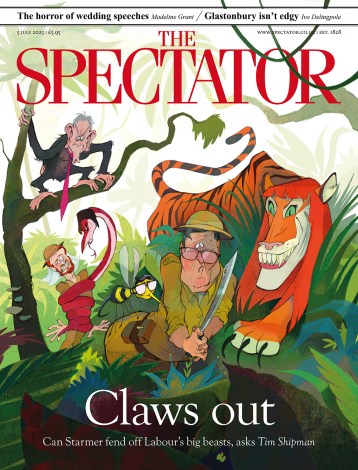I recently stumbled on a Wikipedia page on American diner lingo: ‘sunny side up’, ‘pigs in a blanket’, ‘peel it off the wall’ and so on.
I recently stumbled on a Wikipedia page on American diner lingo: ‘sunny side up’, ‘pigs in a blanket’, ‘peel it off the wall’ and so on. Whether or not these phrases were all commonly used (did anyone really ask for ‘shit on a shingle’ when requesting minced beef with gravy on toast?), the list’s length hints at the remarkable breadth of 1930s American street food.
Then McDonald’s came along. While the old diner offered choice and customisation, the fast-food restaurant offered the opposite — faced with the choice, people chose to sacrifice variety for speed and consistency.
The American obsession with choice has now shifted from food to coffee. In 1993, when I first heard a Berkeley student demand a ‘half-decaf, half-regular latte with low-fat milk to go’, I remember thinking that, in a London café, they would be risking a punch in the face. Today, like McDonald’s, Starbucks is everywhere.
So, to a 1930s mindset, it would seem that two of the world’s most successful businesses are now engaged in a) making the production of hamburgers needlessly uniform and fast and b) making the serving of coffee annoyingly complex and slow.
These changes happen because there are two kind of business competition. The first is where you try to be better at doing what the business next door is doing already. The second is where you create a ‘paradigm shift’, pursuing some entirely new ideal no one has focused on before.
Once quite rare, this second kind of disruptive competition is common in technology, since the rules are changing so fast. So for just a few years the major factor in choosing a digital camera was the number of megapixels in each photograph — sensible enough at first. Once most cameras reached about ten megapixels, however, the measure became stupid: unless you were Kim Jong Il’s official photographer, enlarging your work to appear on buildings, any increase was pointless. So camera makers sensibly directed their efforts elsewhere.
In the same way, all people once cared about with hi-fi equipment was sound quality. Yet, when the iPod arrived, people discovered that what they once thought all-important no longer was. We now happily forgo perfect sound quality for the freedom to carry a music library in our pocket.
These shifting measures hint at the problem of trying to improve public services by establishing metrics and targets. The risk is that you spend too much time fixated on outdated measures of success.
In the past six weeks, I’ve travelled to Coventry, Sheffield, Manchester and Edinburgh. In every case the actual train journey was great. I drank tea, read, wrote emails and looked out of the window — pretty much what I would have been doing had I not been on a train. Getting to the station, however, was a nightmare. Just dragging luggage from the stygian taxi rank beneath Euston to platform six was a far worse experience than the later two hours on the train.
So why are we spending £24 billion reducing the duration of the only part of my journey that wasn’t crap? Surely, like megapixels, speed is a measure we should only pursue so far? What we should target in travel is not time, but the pain incurred shifting from one mode of transport to another.
I sometimes wonder whether it’s time for government to try a paradigm shift. If, instead of devoting all its energies towards huge, intractable problems such as wholesale NHS reform, our government were to establish a Ministry for Eradicating Trivial Irritations, some degree of success would be assured. First actions: a law requiring the standardisation of mobile phone chargers, and the staggering of school opening hours to reduce congestion.
Rory Sutherland is vice-chairman of Ogilvy Group UK.






Comments